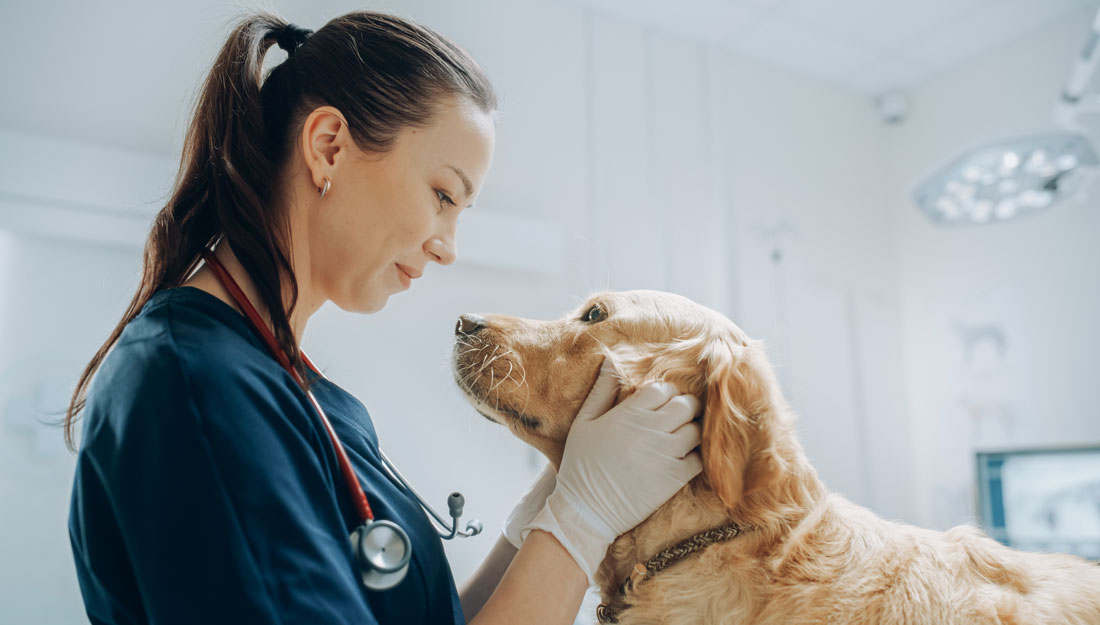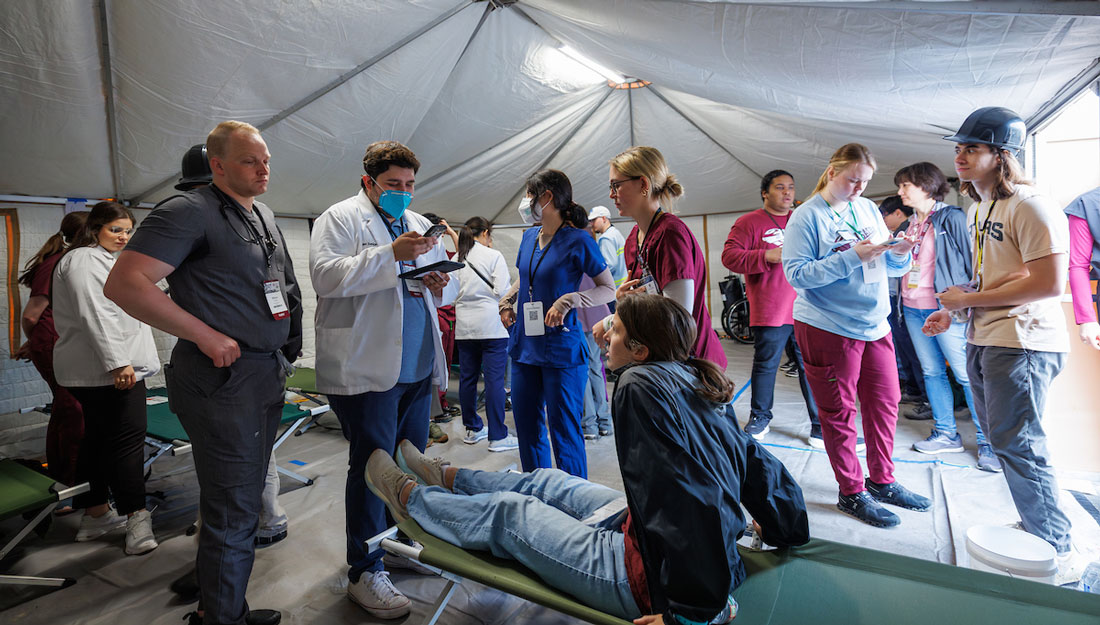- Dorian Martin '06
- Public Health, Research, Show on VR homepage
Study demonstrates correlation between human vaccine hesitancy and pet vaccination attitudes
School of Public Health researcher begins examining public health implications of pet vaccination decisions

Having a trusting and long-term association with a veterinarian is key to pet vaccine acceptance. (Adobe Stock)
Simon F. Haeder, PhD, associate professor at the Texas A&M University School of Public Health, is undertaking an examination of the public health implications of pet owners’ decisions to vaccinate their dog or cat. One of his first research studies on this topic was published recently in the American Journal of Veterinary Research.
Initially focused on researching human vaccination issues, Haeder’s interest in pet vaccinations emerged after his own dog’s emergency in 2023.
“There was very little work done on the pet side, which potentially is equally important,” he said. “You don’t want a massive rabies outbreak or other vaccine-preventable diseases because it’s not good for the owners, pets or veterinarians who have to deal with those issues.”
Vaccinations are proven ways to prevent numerous diseases in dogs and cats. These diseases can be highly contagious or deadly, including canine distemper, canine influenza, canine parvovirus, feline panleukopenia, leptospirosis and rabies.
Although these diseases can quickly spread within a specific species, there is currently no evidence that four of them—canine distemper, canine influenza, canine parvovirus and feline panleukopenia—can be transmitted from pets to humans.
Yet, two diseases that are managed through vaccinations do pose a threat to humans. The most well-known is rabies, which poses a serious public health issue in more than 150 countries and territories, especially in Asia and Africa. According to the World Health Organization (WHO), this disease—which is almost entirely preventable through vaccination and bite prevention and can be effectively treated through taking immediate measures—has a 100 percent fatality rate if the rabies virus reaches and infects the central nervous system. According to the WHO, tens of thousands of humans die annually due to rabies; of those, 40 percent are children under the age of 15.
Additionally, leptospirosis bacteria, which can spread from dogs to humans, can be life-threatening for a small number of people. This bacteria results in flu-like symptoms that can develop into the deadly Weil’s syndrome, according to the Cleveland Clinic. Approximately 1 million humans worldwide contract leptospirosis each year and 60,000 die from this disease.
To begin to understand owners’ decisions around dog and cat vaccinations, Haeder adapted the Parent Attitudes about Childhood Vaccines (PACV) survey, which is commonly used in pediatrics, and then collected data in a national survey.
These responses were analyzed to identify participants who were vaccine hesitant and those who were comfortable with vaccinating their pets.
“We know so little about how pet owners feel about the vaccinations of their pets, and it tells us what the concerns are that are driving the hesitancy,” Haeder said.
He found that the revised PACV was valid and reliable in gauging pet owners’ vaccination decisions. The survey revealed that having a long-term relationship with a veterinarian was associated with pets being vaccinated. In fact, most respondents who had a trusting and good relationship with their veterinarian did not avoid or delay vaccinations, understood the severity of pet diseases, supported the recommended vaccine schedule, and did not describe themselves as vaccine hesitant.
However, the research did identify some concerns about pet vaccinations among some study participants.
“Both cat and dog owners generally trust their veterinarian, but they are very concerned about the effectiveness, safety and side effects of the vaccine,” Haeder said. “And they don’t want their pets to get a lot of vaccines at the same time.”
Haeder believes the issues around pet owners’ vaccination decisions are important to study in a public health context because of general concerns about vaccinations.
“People have long been concerned about vaccinations and this has increased over the years,” Haeder said. “From a public health perspective, the human concern is there, but if this starts spreading to other areas, then we need to adopt a much more holistic approach as the solution to this issue. We need to think much more broadly—and the implications become much larger since the rabies disease is 100 percent fatal if not treated immediately. A rabies outbreak becomes a big public health issue for owners, communities and veterinary professionals who have to deal with it.”
Media contact: media@tamu.edu


